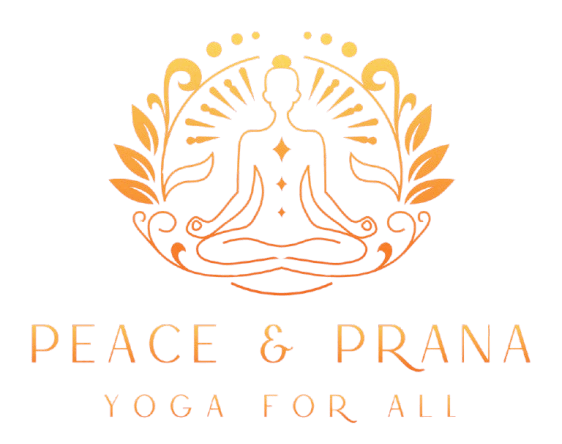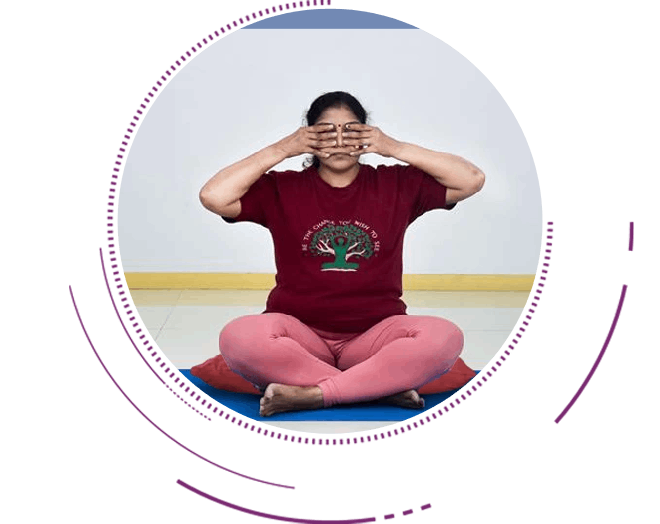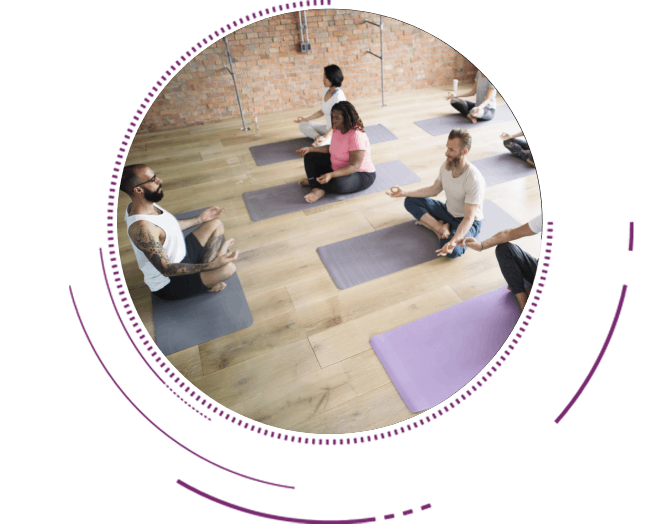
Pranayama (Breathwork),
Meditation & Mantra
Pranayama
Pranayama is the practice of controlled breathing, forming a key component of yoga. It derives from the Sanskrit words “prana” (life force) and “ayama” (extension or control). Pranayama focuses on regulating breath to improve physical, mental, and spiritual well being. Here’s an overview:
Variations of Pranayama

Nadi Shodhana
(Alternate Nostril Breathing)
Balances energy channels, calms the mind, and promotes mental clarity.

Bhastrika (Bellows Breath)
Involves vigorous inhalation and exhalation, increasing lung capacity and energy.

Kapalabhati
(Skull Shining Breath)
Rapid exhalations to detoxify the body and stimulate the mind.

Anulom Vilom
Alternating slow inhalations and exhalations for relaxation and focus.

Ujjayi (Ocean Breath)
Slow, controlled breathing with a slight throat constriction, generating heat and focus.

Bhramari (Bee Breath)
Producing a humming sound during exhalation to calm the mind and reduce anxiety.

Sheetali and Sheetkari
Cooling techniques to calm the body and regulate temperature.

Tips for Practicing Pranayama
- Practice on an empty stomach in a quiet, well ventilated space.
- Sit in a comfortable, upright position (e.g., lotus or cross legged).
- Start with simple techniques and gradually advance.
- Maintain focus on the breath and avoid distractions.
- Consult a trained practitioner for guidance if you’re new.
Regular practice of pranayama can profoundly impact overall health and well
being, offering a simple yet effective tool for maintaining balance in daily life.
Variations of Meditation
Meditation comes in many forms, each offering unique benefits and catering to different preferences. Here are some popular types, including candle meditation:

Candle Meditation (Trataka)
Focus on the flame of a candle to improve concentration and still the mind.
Often used to develop focus, visualisation skills, and inner calm.

Mindfulness Meditation
Focus on the present moment, observing thoughts and feelings without judgment.
Often involves paying attention to breath, bodily sensations, or surroundings

Guided Meditation
Led by a teacher or audio recording, guiding you through visualisations or relaxation techniques.
Suitable for beginners or those seeking help in focusing.

Loving Kindness Meditation (Metta)
Cultivates compassion and kindness by directing positive thoughts to yourself and others.
Often involves repeating affirmations or phrases of goodwill.

Zen Meditation (Zazen)
Rooted in Zen Buddhism, it involves seated meditation with a focus on posture and breath.
Encourages observing thoughts without attachment.

Transcendental Meditation
Involves silently repeating a mantra to transcend ordinary thought.
Practiced twice daily for 20 minutes, it’s designed for deep relaxation.

Body Scan Meditation
Attention is slowly moved through the body, observing sensations without judgment.
Promotes relaxation and awareness of physical tension.

Mantra Meditation
Focuses on silently or audibly repeating a word, sound, or phrase (e.g., “Om”).
Enhances focus and creates a calming rhythm.

Movement Meditation
Involves mindful movement, such as yoga, tai chi, or walking meditation.
Combines physical activity with mental clarity.

Chakra Meditation
Focuses on balancing energy centres (chakras) in the body using visualisations or sounds.
Often used to align spiritual and physical well being.

Breath Awareness Meditation
Centres around observing the natural rhythm of the breath.
Enhances mindfulness and reduces stress.

Sound Meditation
Utilises sound, such as gongs, singing bowls, or chanting, to promote relaxation and focus.
Often referred to as sound baths.
Each method can be tailored to your needs and preferences. It’s worth experimenting to find what resonates best with you.
Holistic Benefits of Meditation
Incorporating meditation into daily life can provide profound, long lasting improvements across mental, physical, and emotional domains, making it a cornerstone of holistic wellbeing.
Variations of Mantra Practice
Meditation comes in many forms, each offering unique benefits and catering to different preferences. Here are some popular types, including candle meditation:

Vedic Mantras
Rooted in ancient Indian scriptures, these are chanted for spiritual growth or specific benefits (e.g., Gayatri Mantra).

Bija Mantras (Seed Sounds)
Simple sounds like “Om,” “Hum,” or “Ram” that resonate with the body’s energy centres or chakras.

Silent Mantras
Repeated mentally rather than aloud to deepen internal focus and introspection.

Kirtan or Chanting
Involves singing mantras in a group setting, often accompanied by music, to enhance collective energy and joy.

Affirmation Mantras
Positive, secular phrases (e.g., “I am calm,” “I am strong”) used for mental and emotional empowerment.

Healing Mantras
Used for physical or emotional healing, often tailored to a specific need or intention (e.g., mantras for anxiety relief).
By integrating mantra practice into daily life, individuals can tap into its transformative power, fostering a sense of balance, focus, and connection that benefits mind, body, and spirit.
For further details and bookings, please reach out to us at info@peaceandprana.com.

Embrace meditation and mantra to unlock mindfulness,
reduce stress, and enhance emotional
and spiritual wellbeing.






